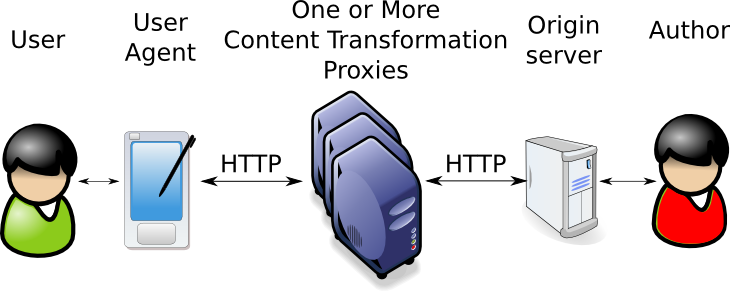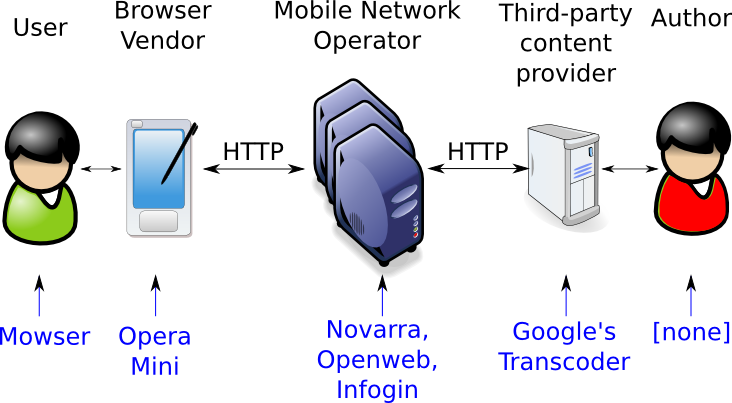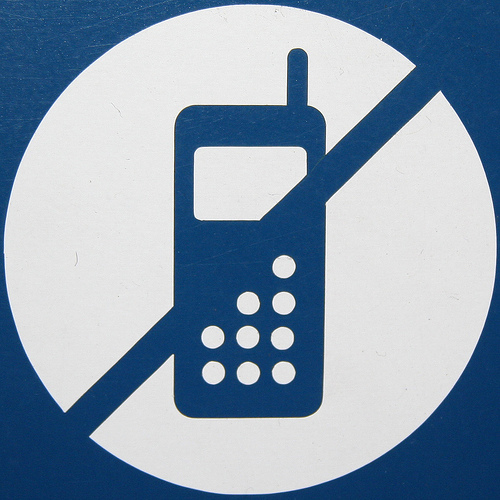Contents

Photo by Elaine Vallet
- About W3C
- Motivations
- Guidelines Needed!
- Legacy is not Future-Proof :(
- Outlook / Conclusion
First Part:
About W3C
The World Wide Web Consortium
Leading the Web to its full potential...



Photos by mnadi and psd
Web Standards

Photo by Elaine Vallet
X(HTML), CSS, XML, SVG, PNG, WCAG, XSLT, RDF, OWL, ...
Second Part:
Content Transformation - Motivations
Fragmentation is the Mobile plague

Photo by gin able
-
Fragmentation everywhere
devices, networks, software
-
A good portion of the Web is not accessible on mobile devices
e.g. Flash, Javascript, pop-ups, tables often not supported
-
Content adaptation costs a lot
lots of legacy content
Possible solution: Content Transformation Proxies

- Restructuring - linearization, pagination
- Recoding - HTML Tidy, SVG to PNG, PNG to JPEG, video transcoding
- Optimizing - (re-)compression, removing redundant spaces
Third Part:
Content Transformation - Guidelines Needed!
Wanted! Legacy

Photo by Clemson
- Legacy Web pages may need CT
- Legacy Mobile Web browsers may need CT
- Mobile Web pages do not need CT
Small glitch on Mobile Web pages
Mobile Web pages do not need CT
And yet they were adapted broken in practice
Control needed

- CT is embedded in other services, hardly visible by users
- Users bought a mobile device and a data plan
- No established means to control CT
Content Transformation Guidelines
Standardization usually helps when stakeholders have diverging needs:
- Mobile Web authors do not want yet another layer of complexity
- Mobile network operators want the Web at large while keeping control on security and network loads
- End users want things to work without impacts on their monthly bill, and do not understand technical problems.
→ The W3C Mobile Web Best Practices working group
started to work on Content Transformation guidelines
based on existing technologies.
Global switch to turn off CT

Photo by El Tekolote
Cache-Control: no-transform
(but the switch unfortunately also prevents optimization)
Do not adapt mobile Web pages

Photo by Leo Reynolds
What is a mobile Web page?
Content-Type, DOCTYPE, mobileOK claim
Fourth Part:
Legacy is not Future-Proof :(
Copyright infringements?

Photo by 917press
- Images converted, resized
- Content altered
- Ads stripped or replaced by other ads
- Toolbars inserted
Web Browsing only

Photo by Elaine Vallet
- Is the HTTP request coming from the device's Web browser?
- What about Web applications?
- No (normative) way to be sure
User-Agent spoofing

Photo by mortenjohs
Accept, Accept-Charset could be completedUser-Agent is changed to fake IE or Firefox- Original headers are needed to access a Device Description Repository
→ Content tasting. Send the original headers, alter them only if needed.
Same origin policy

Photo by Gaetan Lee
- CT "proxies" sometimes need to become an origin
- This new origin gives access to all the Web!
- Security alert!
→ CT proxies should not play as an origin gateway.
Security

Photo by mouton.rebelle

end-to-end <> end-to-middle + middle-to-end- HTTPS cannot be "remote" (e.g. Opera Mini, Teashark, Skyfire, Bolt decrypt content on servers)
- Users don't understand security
Fifth Part:
Outlook / Conclusion
What's next?

Photo by Un ragazzo chiamato Bi
- Discussion still going on between various stakeholders, join W3C!
- POWDER could be used to communicate the author's intent and expectations
- Transparent content negotiation might help in the future
- The development of ubiquitous Web content should be encouraged.
- Mobile Web Best Practices to help develop mobile-friendly content.
Conclusion
- Thinking ubiquitous today prevents problems for tomorrow.
- Great care must be used when deploying in-network solutions.
- Legacy is a heavy burden and should not be underestimated.
- Discussions between parties is essential.

Supported by MobiWeb2.0,
funded by European Union's FP7.





















